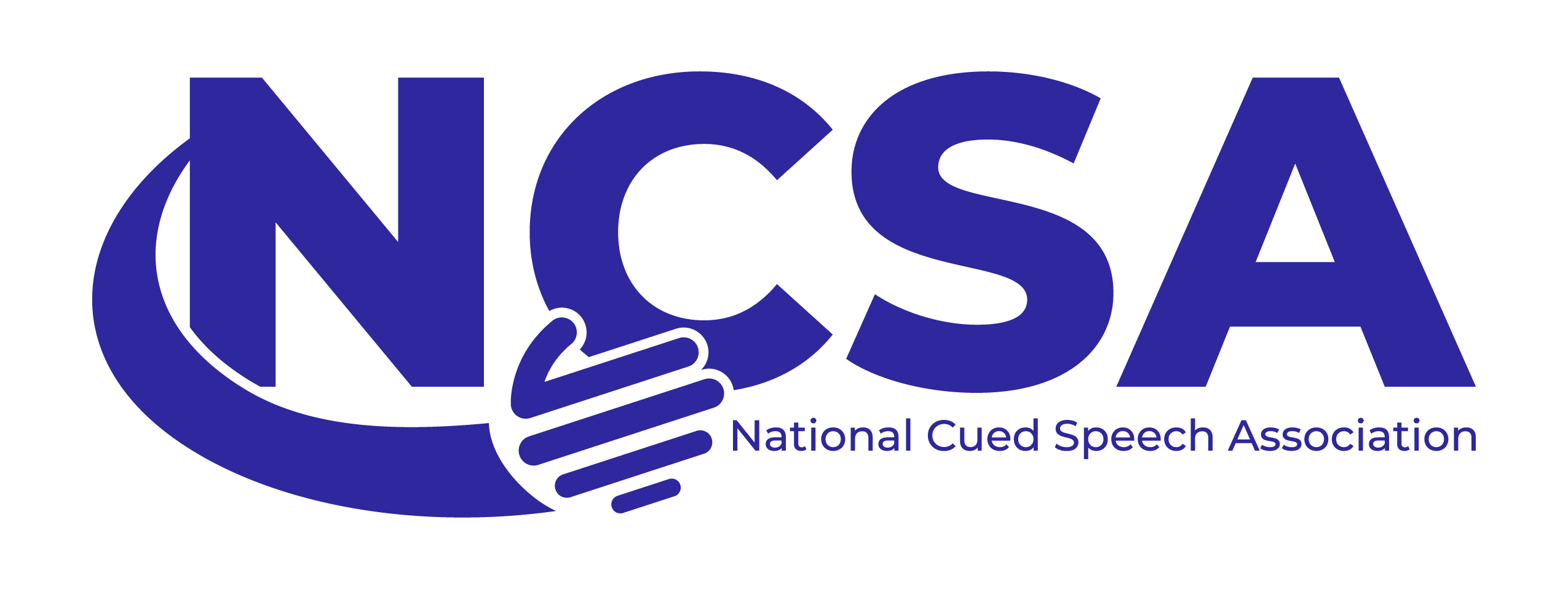By Pamela H. Beck
Cued Speech has been and is being used with children who have autism and other Pervasive Developmental Disorders (PDD), as one part of individualized packages of special services.
Does Cued Speech make sense for communication disorders due to Pervasive Developmental Disorders? The answer is yes.
For what purpose does one use Cued Speech? Families and educators use Cued Speech to overcome the inability or difficulty in processing auditory information that is a common component of the syndromes which fall under PDD. Poor comprehension, deficient articulation, phonologic errors and, somewhat paradoxically, hypersensitivity to auditory stimuli are present in these syndromes.
Why does Cued Speech work for individuals with PDD?
- Individuals with PDD tend to process visually better than audit orally; Cued Speech presents sound (phonemes) visually.
- Cued Speech helps individuals focus and begin to relate to people’s faces; Cued Speech combines the information available on the moving lips with eight handshapes used in four locations near the mouth.
- Cued Speech is a multi-sensory integrated approach: voice and visual cues are synchronized and complementary. The person receiving Cued Speech sees and hears the message as a unit; when that individual uses Cued Speech him/herself, the hand cues provide a motoric reminder of the sounds and sound patterns to be expressed.
Examples:
Written accounts of the use of CS with children with PDD are scarce though oral accounts are more abundant. If you are a family or professional using Cued Speech for this important purpose, we encourage you to write a log of tbe procedures you use in introducing Cued Speech, using Cued Speech, and a description of the results that you achieve and forward it to the National Cued Speech Association.
The teachers of a child who is hypersensitive to sound use Cued Speech without voice. The rationale and benefits are that Cued Speech presents sound (phonemes) visually; the student is getting the same phonemic message as if he were listening to it.
Ann Bleuer, one of the founders of Alternatives in Education for the Hearing-Impaired (AEHI)/ A.G. Bell Montessori School in Illinois, has been successful with a variety of unique children. Ann has used Cued Speech within an eclectic blend of strategies compiled to meet the needs of the individual child.
The following items are summaries of stories Ann shared in a telephone interview. With each of these children (all of whom have sustained brain damage, but not all of whom are labeled PDD), Ann used Cued Speech to advantage:
One child could not communicate after surviving encephalitis. The staff at AEHI began using survival signs along with Cued Speech with him at age 3. By the time he was 7 years old, he was communicating by talking, he chose not to use signs, and he read on grade level.
Another boy was “allergic” to the activity in his own brain. He was so incapacitated by his condition that he could not eat or drink. Later, he was able to be mainstreamed in his neighborhood school with a Cued Speech transliterator.
Due to an auto accident, one student suffered severe bead trauma. Her brain does not process sound. The use of sign language frustrated her, but Cued Speech made sense to her. She returned to high school; Cued Speech helps her maintain her spoken language and speech clarity.
Cued Speech seems appropriately applicable as a strategy in the treatment and education of children with Landau-Kleffner Syndrome. For those unfamiliar with this syndrome, it is also described as acquired aphasia. After developing normally and learning the language, the child begins to be affected by hyper electrical activity in the brain, which renders the temporal lobe unable to process sound and thus also causes the child to stop speaking.
Other approaches:
Frequent recommendations for treating and remediating auditory processing disabilities for children with PDD are to use(l) drugs, (2) intensive training matching sound to written phonemes, and (3) computer manipulation of phoneme duration. Approaches (2) and (3) are related to the use of CS.
Approach (2) intensive training matching sound to written phonemes: The benefits of this approach can be accelerated by taking advantage of the following attributes of Cued Speech:
- consistent visual delineation of the sound (based on phonemes rather than the vagaries of spelling);
- focus on the face and the production of speech sounds;
- sensory-integrated reception and expression of the target sounds;
- unified syllabic patterning of sound groups
Approach (3) computer manipulation of phoneme duration:
Aspects of manipulation of phoneme duration are common in the use of Cued Speech. Cued Speech is instantly flexible to meet the moment’s need of the individual, and cuers frequently lengthen and shorten phonemes to enhance the understanding of the receiver.
The National Cued Speech Association looks forward to assisting you in implementing Cued Speech and your personal accounts of success.


